Conus litteratus Linnaeus, 1758
Lettered cone, 130mm
Conus
litteratus is common in sandy areas of lagoon interisland reefs. It typically
rests on the surface or partially buried in the sand by day, although often
you can find them crawling about and active in full sunlight. We usually see
them at depths of 3 to 15m.
They differ from the similarly marked and also large Conus
leopardus in heavier spotting, the usual presence of several spiral
light orange bands, and dark staining of the shell within the anterior end of
the aperture. Most living specimens are covered with a thick brown periostracum
that can be thick enough to nearly hide the spots.
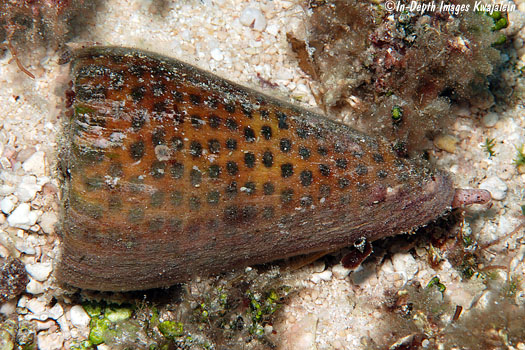
Large specimens are often covered with thick periostracum and often a layer
of packed sand.
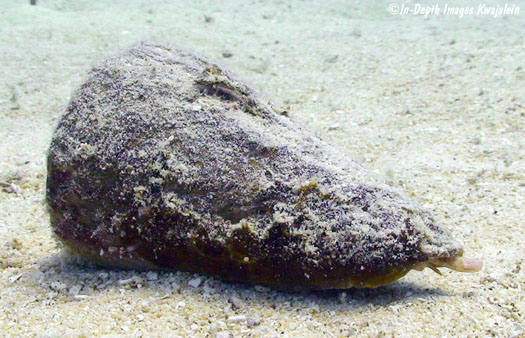
Younger specimens may have thinner, more transparent periostracum.
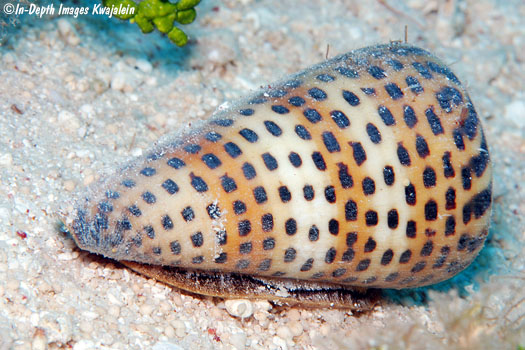
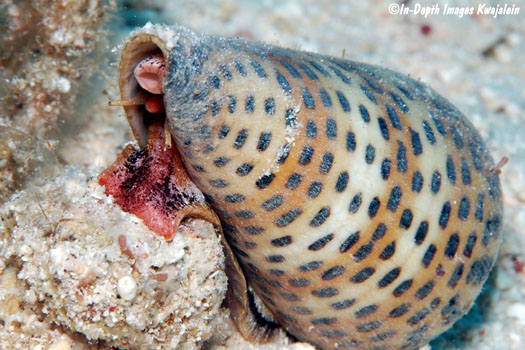
The closeup below shows the large
siphonal opening at the top of the aperture. Just below this is the orange puckered
mouth, flanked on either side by a long thin tentacles that bear eyes out near
their tips. This is another vermivorous cone shell.
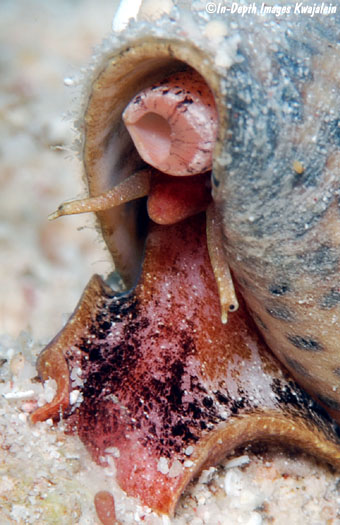
The egg cases of this species
are usually attached to rocks or clumps of Halimeda algae.
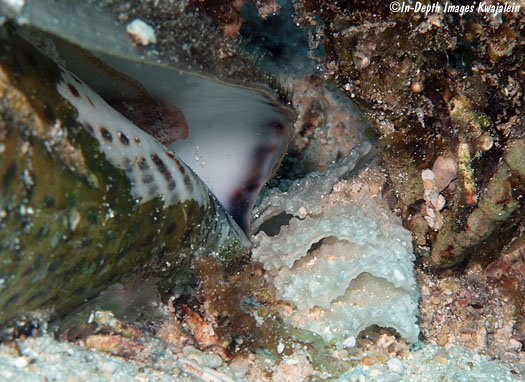
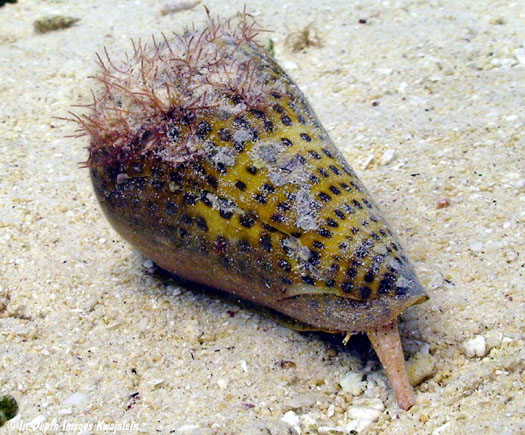
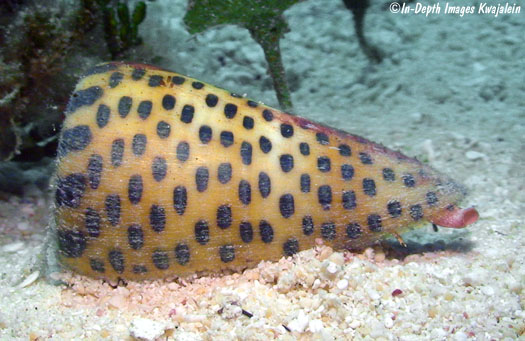
A young specimen.
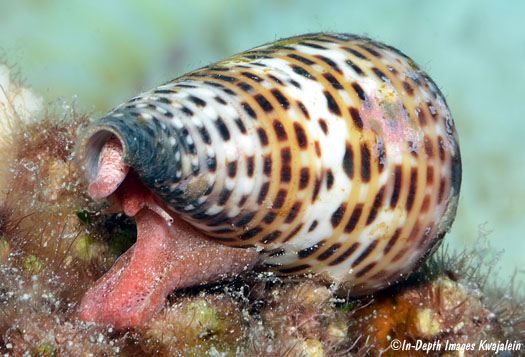
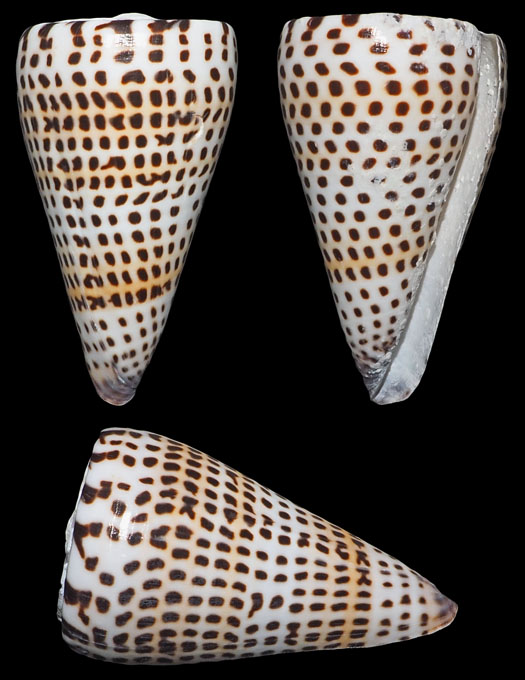
Created 4 July 2009
Updated 12 March 2020
Return to cones
Kwajalein Underwater home










